Horse lifespan varies by breed, size, and use—most live 25–30 years, but smaller or cold-blooded breeds often live longer. Sporting breeds like Thoroughbreds age faster and may have shorter lifespans. I’ve cared for horses most of my life—riding, feeding, brushing their hooves, and watching them grow from playful foals into wise seniors. The lifespan of a horse really depends on many things, and it’s hard to generalize. Some owners are surprised to learn that many horses live well into their 30s, with a few even beyond. I once met a Morgan that lived to thirty-two, still enjoying light walks in the pasture, his molars worn but his spirit strong. The oldest horse recorded was Old Billy, who lived to be sixty-two—a number that even some veterinarians find remarkable.
From the fieldmaster guiding a foxhunting pack to the pet pony led on a leadline at HOYS, careers and lifestyles shape equine aging. Some breeds, like Mountain & Moorland, or hardworking quarter horses and Arabians, are known for longer lives when monitored and maintained properly. Regular dental checks, a good diet, monitoring for laminitis, and modern diagnostic tests have all improved outcomes. In 2020, I helped care for a TB named Fernando, a retired racing star, who aged calmly in pasture, still proud though no longer ridden. Whether they’ve worked in barrel racing, trail riding, show jumping, or simply been loving companions, these animals’ lives vary in length—but with the right treatments, soaking, feed, and wellness support, a life into the mid-20s or longer is something many riders now expect.
What Makes Some Horses Live Longer Than Others?
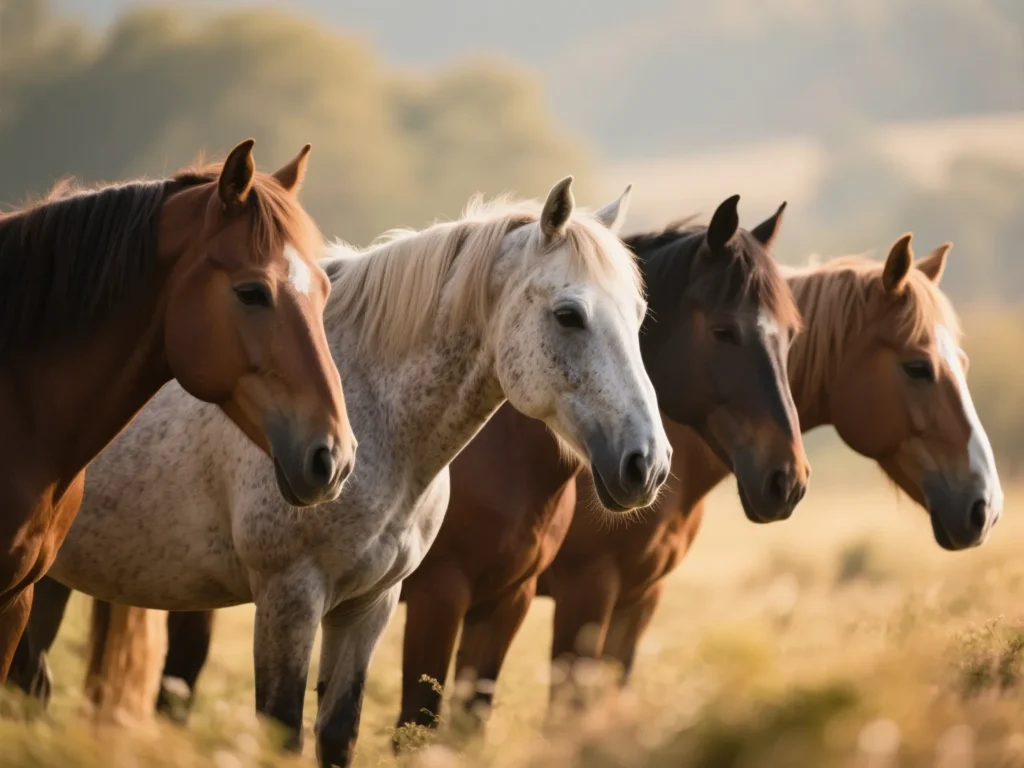
Some horses live a long time because of many things that contribute to their health. A major factor is genetic strength, but what truly makes a difference is how much care they get over time. Regular medical check-ups, proper hoof and dental maintenance, and a healthy diet all help in improving their chances at a longer life. Daily exercise is another important component, as it keeps their bodies strong and their minds active. When all these parts are understood and consistently provided, they work together to determine how long a horse might live.
What is the Average Age of a Horse Depending on the Breed?
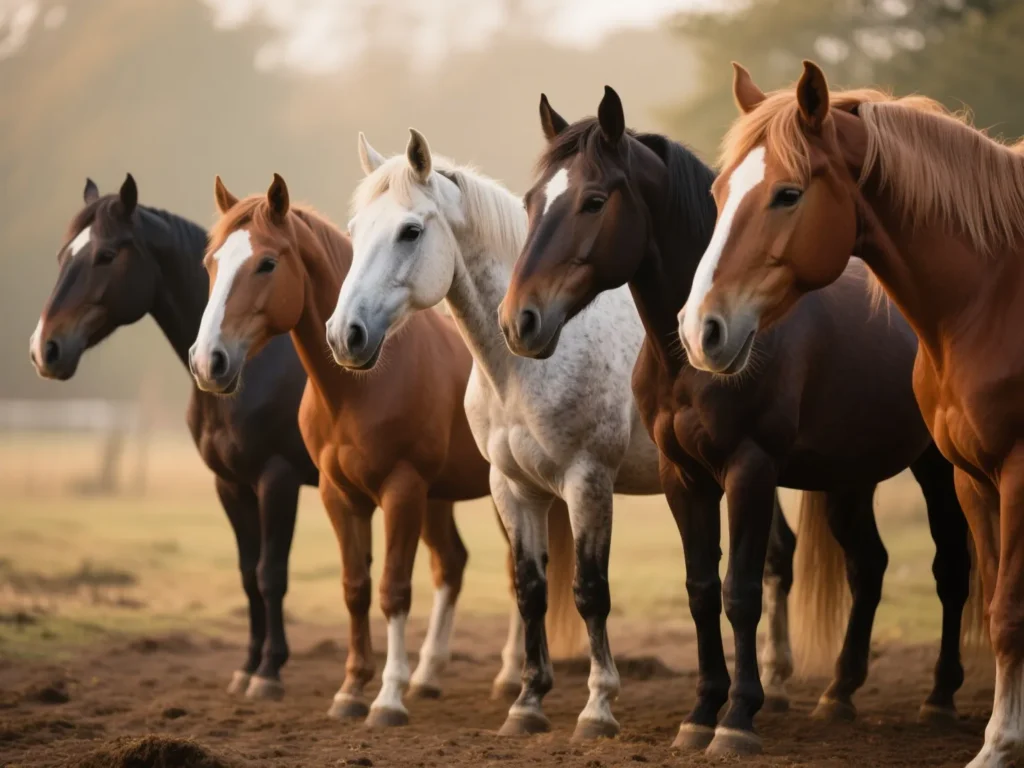
The average age of a horse really depends on its breed, size, and use. While many equines typically live around 25 to 30 years, this lifespan differs among breeds. Cold-blooded horses like Fjords or Icelandic ponies often live older, sometimes beyond 35, and are known for exceptional hardiness. Smaller breeds, such as a pony, may reach 30 or even multiply their age in human terms—one horse year is often said to equal about 3.5 human years, so a 20-year-old horse would be like a 70-year-old person. Thoroughbred or sporting horses, built for speed and performance. Usually mature quickly but might not live as long due to intense growth and activity.
For example, the oldest known horse reportedly lived to 62, though most breeds are considered senior by 18. Horses are often down from their peak by 10, but with proper care, many thrive well into their classic years.
How Nutrition Affects Equine Lifespan
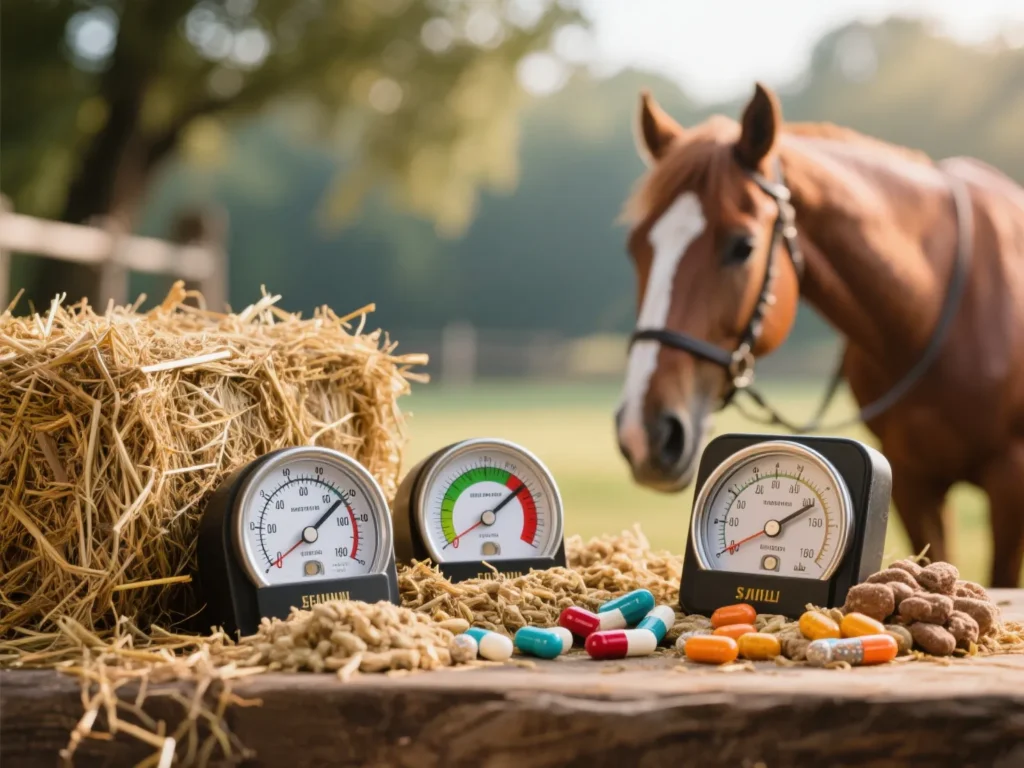
Nutrition plays a vital role in a horse’s lifespan, significantly affecting how well it can handle stressors, pathogens, and foreign invaders. A better feeding routine that includes regular supplements, trace minerals, vitamins. And amino acids helps in maintaining the overall health and condition of the body. Horses with good diets are less prone to illness, metabolic disorders, injury. Or insulin issues, and are more likely to live longer and healthier lives. When older, horses need consistent nutrition to support resistance to illness, aid recovery, and battle age-related decline. Compared to poor diets, proper nutrition supports foundational health and even genetically affected animals show positively impacted aging. Feeding preventatively becomes a major strategy in maintaining quality of life Especially for horses that are prone to issues as they age.
Other Things to Take Into Account
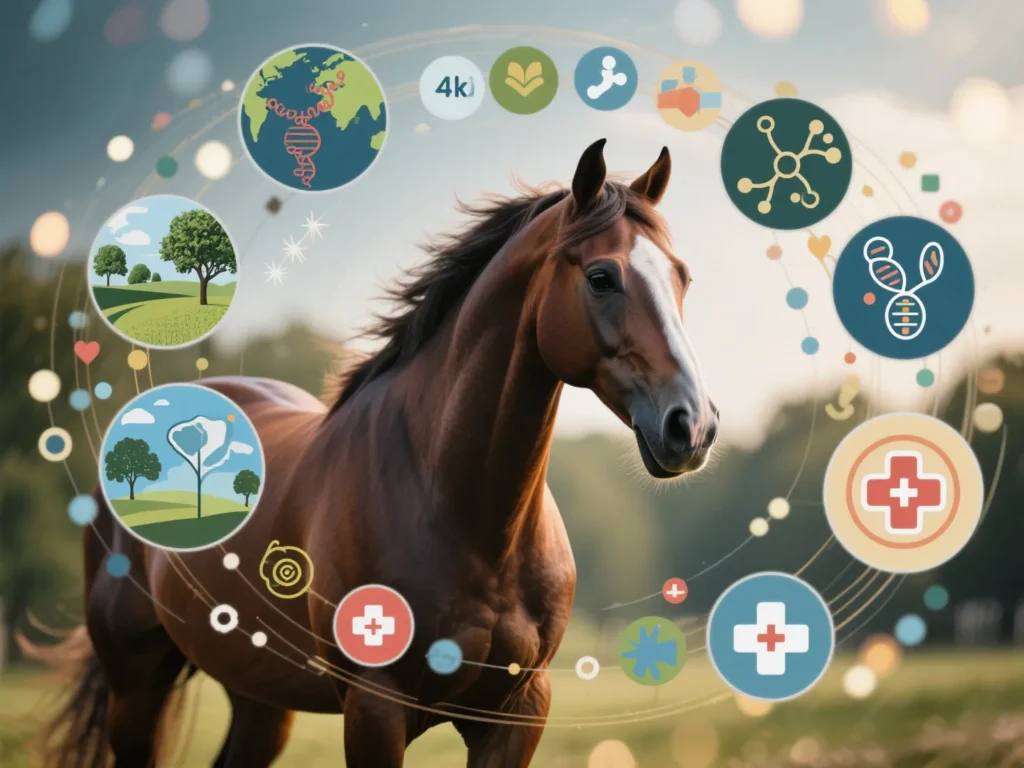
As a horse gets older, various signs of aging begin to appear, much like in humans. You might notice wrinkles around the lips, sagging of the back, or hollowing along the topline as muscle mass decreases. The coat may turn gray, the eyes can show clouding, and teeth wear can affect intake of water and feed. Some horses develop pituitary issues or hormonal imbalances that lead to laminitis, abnormal urination, or even tumors like melanomas, sarcoids, or warts, especially in grey or gray horses. Changes in behavior, facial features, or movement may also signal that kidney, liver, or other functions are disrupted.
These physical changes, whether small or large, may not follow the same universal pattern for every horse. So regular vet or veterinarian consultation becomes key. Just like a human’s aging process, horses need thoughtful observation to make the right decision when changes fall outside the norm. Even saloon-style droopy lips or back droop can indicate that aging is well underway.
Swayed Back
As a horse ages, its back may begin to sag or show a downward curve. Often referred to as a swayed back. This condition is caused by an incline of the spine due to weakening muscles and the pull of gravity, especially between the withers and hips. Some breeds are more prone to this than others, and it typically becomes more noticeable in older horses.
Rugged Coat
An older horse often develops a thicker, furrier coat that loses its sleek appearance and sheen. As the horse ages, the hair may grow denser, feel frequently rough, and turn gray, especially on facial areas. This rugged coat can be a natural sign of aging or a response to temperature changes and health shifts.
Muscle Mass Loss
When a horse starts aging, it begins to lose solid muscle and may appear less filled out in areas like the neck, haunches, or shoulders. This decline in flesh can make movement more difficult, and older horses may struggle to tighten their frame or move as they did before.
Lameness
Lameness is typically a visible sign of aging, especially in the horse’s legs and joints. Sagging fetlocks, droop in posture, and ridges along the body may be indications of discomfort. Vision loss in the eyes, decreased immunity, and problems with the GI tract can also make horses prone to soundness difficulties, including weakness in the lips and coordination challenges.
Stages of the Average Horse Lifespan
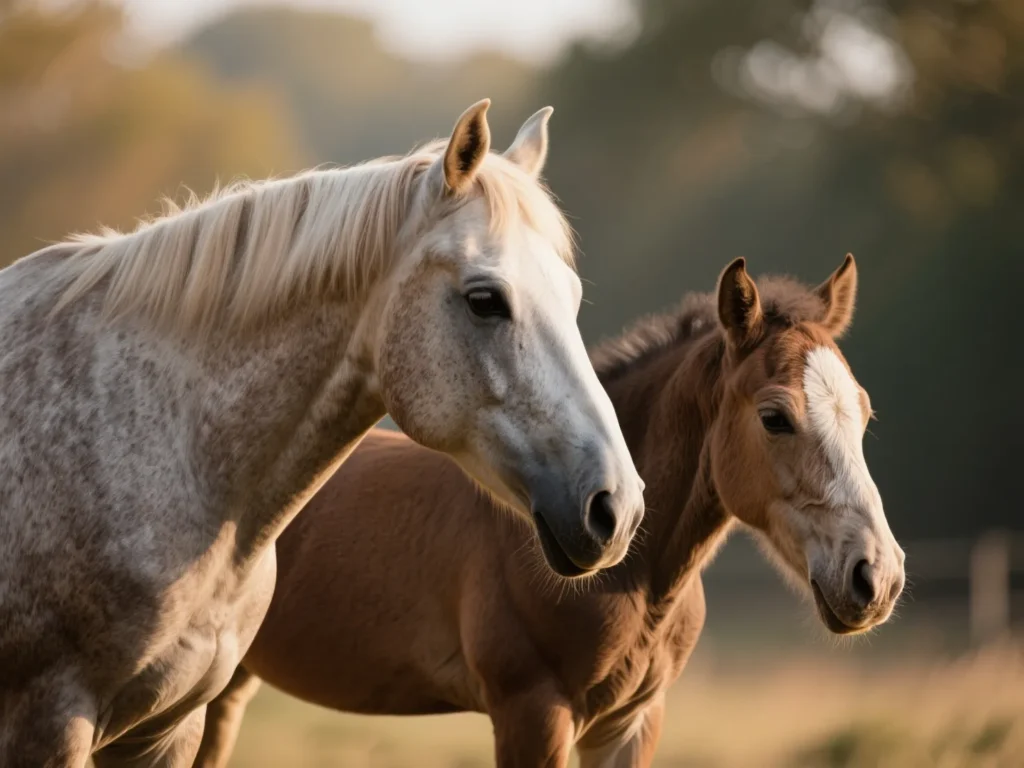
To understand a horse’s lifespan, it’s important to recognize the different stages and how changes happen over time. Each period requires specific care and attention to support the horse’s health and well-being.
Newborn (Birth to Weaning)
During this stage, newborn foals are dependent on their mothers. And everything from pregnancy to birth affects the unborn foal’s wellbeing. The mare’s nutrition is important to the health of the foal, as it directly affects how the newborn begins life.
Weanling (4–7 months old)
Between 4 to 7 months, foals are weaned from milk and begin learning grooming, haltering, and leading. Their nutrition shifts to include grains and forages, and routine care like farrier visits and veterinary checks help guide months of ground training while transitioning away from mothers.
Youth (Weaning to 3 years)
The youth stage spans from weaning to 3 years. A period where growing horses are not yet fully trained but begin learning under saddle. As their growth plates close and their bodies develop, they remain under guidance until their physical growth is completed.
Adult (3–15 years)
This is the prime of a horse’s life, often from 3 to 15 years. Horses in this age range grow fully, compete in athletic events like Western riding, showjumping, or Olympic-level competitions, and participate as racehorses or in various show disciplines. Their levels of activity peak around 10–12 years but can continue strong until 14 or 15.
Geriatric (15+ years)
Once a horse reaches 15 years, it enters the geriatric stage. Older horses may begin slowing down and require more support and specialized care. With the right attention, they can still thrive in light activity or companion roles for many years.
How to Estimate a Horse’s Age

To estimate a horse’s age, one common method is by examining its teeth, especially the incisors. As the animal matures, changes in the shape, angle, and wear of the front teeth can reveal useful characteristics. The lower and upper incisors begin to develop specific signs at certain years—for instance, at five years old. The center tooth is more oval, while by ten, the Galvayne’s groove may start to appear near the gum line. This groove moves gradually, becoming more visible and shifting position with time, and can disappear by twenty. Another indicator, the dental hook, might fall or modify at six, ten, and twelve years. Other features like a dark spot or star on the tip of the tooth also help determine the age.
In countries where the law requires microchipping horses, owners or vets can also find a horse’s age through registration papers, passports, or by scanning the electronic chip. These records may include the date of birth and travel history. Which is especially helpful for senior horses where dental signs are harder to track. In instances where papers are lost. Observing modifications in dental wear or consulting visual guides—such as YouTube summary videos on mouth structure. Can serve as an alternative way to estimate age. Keep in mind that features like hook, angle. Or the spread of the front teeth may modify with use and feeding. So no single method is perfect. Still, combining multiple signs allows for a more reliable estimate.
What Can Cause a Horse to Die?
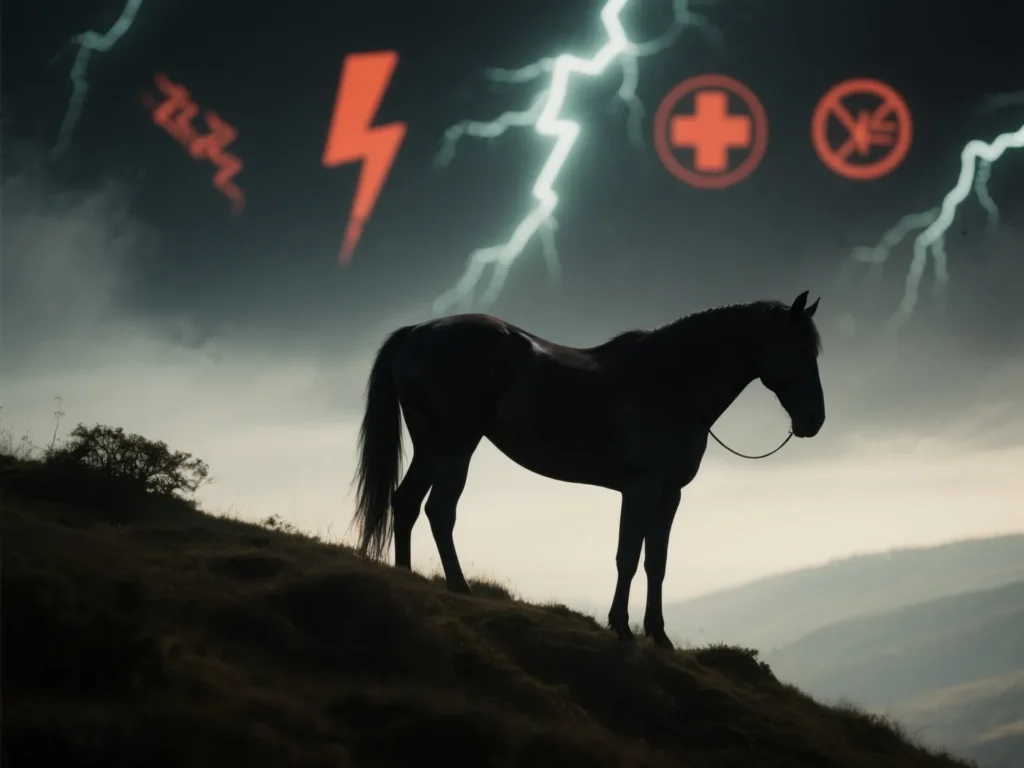
Many horses, especially those involved in equestrian sports or performance activities. May die from various causes, with digestive issues like colic being among the most common. In fact, twisting of the intestinal tract or fatty lipomas can lead to severe complications and even death. The development of tumours, cardiac arrest, and infectious diseases also pose significant threats. Racehorses and others in high-performance roles face a higher risk due to intense physical strain. Studies from equine centres show that around 15% of the population is lost to digestive pathologies. While roughly 10% succumb to cardiac or systemic failures. As horses age, especially beyond their former sports years, the risk of fatal complications increases. Highlighting the importance of monitoring health even in old or retired horses.
How To Improve a Horse’s Lifespan
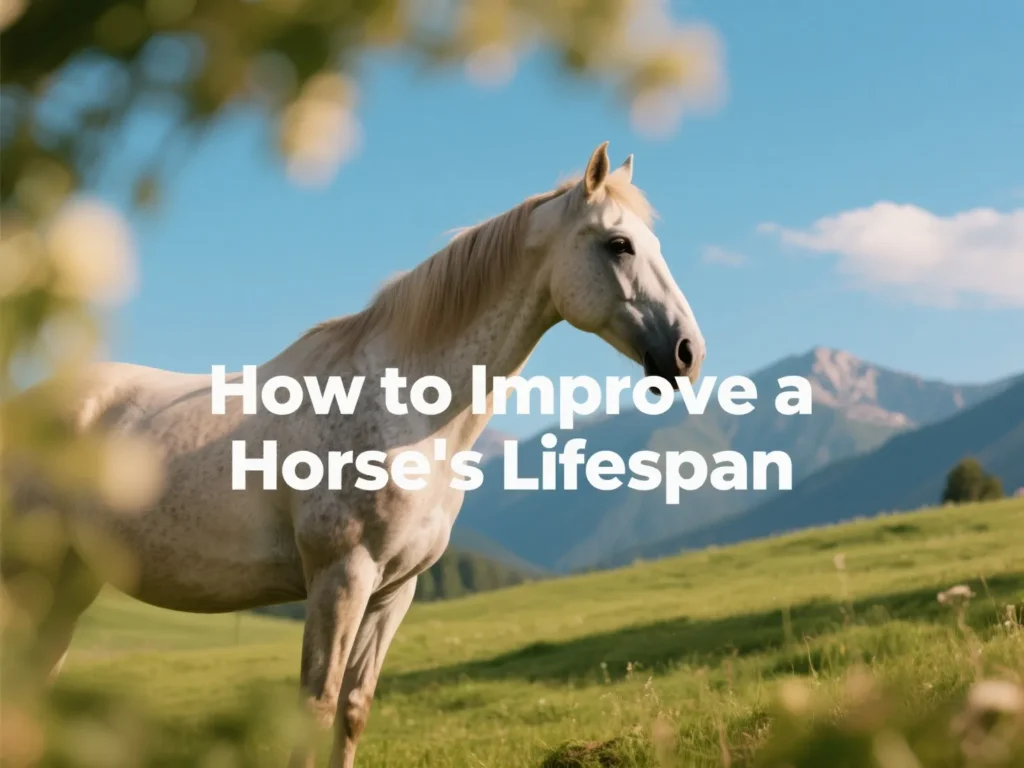
To improve a horse’s lifespan, it’s essential to create a tailored plan that addresses its age, condition, and goals—whether it’s in active training, nearing retirement, or already older. Begin with regular vet or veterinarian checks to monitor for chronic issues like PPID or Cushing’s, which often appear as horses age. Preventing arthritis, weight loss, or bad teeth early on can make a huge difference. Feeding proper food like Royal Horse S-350 or Tribute, which contain balanced calories, fiber, and controlled sugars and starches, helps support the digestive system, maintain a healthy body shape, and improve resistance to ageing. Choose hay with good quality, avoid overfeeding, and allow gradual transition between feeds. Also, avoiding stress and ensuring a safe environment helps prevent conditions from developing into something worse.
Equally important is ensuring younger horses are given a strong foundation of care, training, and nutrition to support long-term wellness. A complete diet is necessary to digest nutrients efficiently, especially in older horses who may struggle with teeth or digestive issues. Regular visits to a dentist are just as vital as feeding, as poor dental health can prevent proper eating and lead to rapid decline. Horses benefit from additional support during ageing, such as joint supplements and tailored exercise. Avoid harsh workloads or sudden changes; instead, adopt a proactive approach focused on maintaining vitality, progress, and moral wellbeing. Ultimately, the efforts people make—both general and specific—and how well they adapt them over time determine a horse’s ability to live longer and healthier.
Feed a Proper Diet
A proper diet is important at every age to help a horse maintain body condition and keep up with its workload. For senior horses or those with worn teeth, grass-based options like hay cubes or soaked feeds can make chewing and grinding easier and more effective. Switching to feeds with smooth surfaces is often a better option as horses age, especially if grinding becomes a struggle. Providing a diet that matches the appropriate energy needs while ensuring proper nutrient intake supports a healthy body and digestion.
Exercise Your Horse
Regular exercise helps prevent muscle loss and keeps joints flexible, especially in older horses. Owners should tailor an appropriate fitness regimen to each individual horse, and a veterinarian can determine what’s safe if the horse has arthritis or is recovering. Support through controlled movement is essential to keeping the horse sound and active.
Pay Attention To Environmental Management
Environmental management is important year-round to keep horses healthy. In winter, proper blanketing, shelter, and access to water that doesn’t freeze helps regulate temperature. In summer, providing cool, shaded spaces and ensuring adequate salt and water intake supports body function. Younger and older horses especially benefit from well-managed conditions.
Maintain Horse Hoof Care
Healthy hooves are key to a horse’s quality of life. Regular trimming, cleaning, and inspection help maintain soundness and prevent problems like abscesses, thrush, or injuries. Overgrown or thin-soled feet can cause serious discomfort, especially in competing or aging horses. Maintaining shoes when needed and monitoring for arthritis or other conditions ensures your horse stays comfortable through all stages of life.
Give Your Horse Routine Dental Care
Routine dental care is essential for horses, particularly as they age. Over the years, a horse’s teeth may lose their natural angles, making it harder to chew, digest, or even consume food properly. A veterinarian can recommend routine checkups and maintenance to keep the dental structure in alignment and prolong life. Caregivers may need to provide soaked meals or softened food to senior or geriatric horses to prevent problems like choking or breaking teeth.
Prioritize Veterinary Care
Routine veterinarian care plays a key role in catching underlying issues before they worsen. Regular exams, deworming, fecal checks, and keeping your horse vaccinated help control disease and identify conditions like PPID or Cushing’s. Older horses are especially vulnerable to colic, arthritis, and other health factors that can affect life quality or prolong recovery after injury or illness. The best care takes a proactive approach to whatever might happen.
Lifespan of Horses

The lifespan of horses depends on many factors like breed, size, genetic strength, nutrition, and access to veterinary and medical care. While the average life expectancy of Equus caballus is between 25 to 30 years, some may live into their 40s, or even 50s, particularly with good forage, proper diet, and preventive health management. Domesticated horses that receive regular care, balanced nutrition, and live in safe conditions tend to outlive their wild counterparts, who face risks from illness, injuries, and environmental threats.
Small breeds and ponies often live longer than larger breeds, while chronic diseases, abnormalities, or physical wear from work and activity can shorten a horse’s life. Owners should monitor their horse’s health, keep up with paperwork, and understand that age is just one indication of future quality of life. Like dogs, horses thrive with consistent care, strong herd bonds, clean shelter, and attention to both physical and emotional needs.
Who was the Oldest Horse?
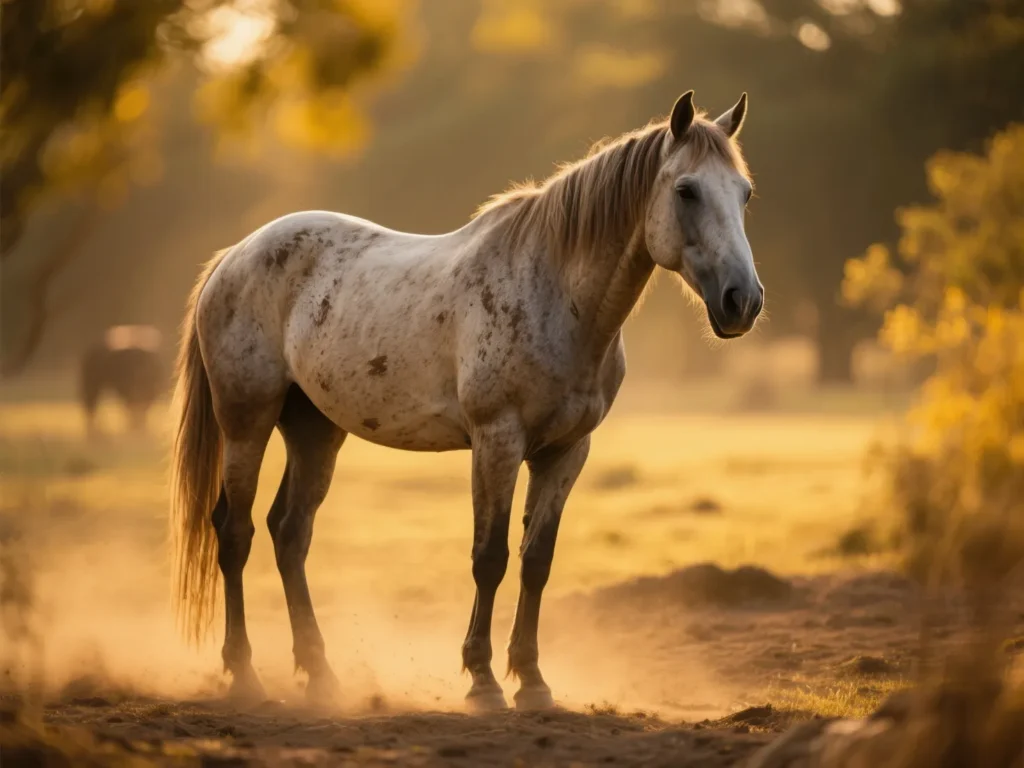
The oldest recorded horse in World history was Old Billy, a Shire-type gelding born in the 18th century in Lancashire, England. He was known for pulling canals boats along the river and performed hard labor for most of his life. Old Billy reached an advanced age of 62 years, far beyond the typical horse’s lifespan. He had a dark coat with a white blaze and became widely known thanks to his notoriety and local fame. After his death, his head was taxidermied and is now displayed at the Cecil Higgins Art Gallery & Museum in Bedford, while a painting by W. Taylor, a painter from his hometown, helps preserve his memory. According to the Guinness World Records, Old Billy remains the oldest horse ever recorded—a living piece of equine history and a remarkable example of lifespan longevity.
Conclusion
Various factors significantly influence the lifespan of horses, which typically ranges from 25 to 30 years. These include breed, size, and use, with smaller and cold-blooded breeds often living longer than sporting breeds. Genetic strength and consistent care are crucial. Key elements for improving a horse’s lifespan are proper nutrition, including balanced diets and supplements, regular exercise to maintain muscle and joint health, and effective environmental management. Read More at Insight Web.
Routine hoof care, dental care, and comprehensive veterinary care, including regular check-ups and preventative measures, are essential to address issues like laminitis, metabolic disorders, and age-related decline. While digestive issues like colic, tumors, and cardiac arrest are common causes of death, proactive management of health factors can lead to a longer, healthier life, potentially extending well into their 30s, 40s, or even 50s, as exemplified by Old Billy who lived to 62 years. Ultimately, a horse’s ability to live longer and healthier depends on consistent, tailored efforts in their care.
FAQ’s
Broadly stated, compact species usually enjoy extended lifespans and might stay active well into their 20s or even 30s. Bigger species, by contrast, often live shorter lives and could require earlier withdrawal from activity.
A 27-year-old horse is approximately the same age as a 78-year-old human. Although the comparison isn’t exact, people generally accept that one horse year equals about three human years. That said, horses age more rapidly in their early life, with the first two years being closer to 6.5 human years each, and then the rate slowing to around 2.5 human years for every additional horse year.
Cold-blooded breeds, which typically reach maturity by 3 or 4 years old, often have a lifespan of around 18 years. In comparison, thoroughbred horses usually live closer to 25 years, though this can vary based on the intensity of their sporting career. The oldest known equines lived remarkably long lives—62 years for a horse and 56 years for a pony.
Old Billy, the oldest horse ever recorded, lived an astonishing 62 years. He was born in 1760 and died on November 27, 1822. Known for pulling barges, Old Billy became a local legend because of his extraordinary age, as reported by Lancaster Farming.

